By Rich Larson, News Director
As Covid-19 cases continue to drop in Minnesota, last week, Governor Tim Walz eased the state guidelines on distance learning. And while he is not explicitly ordering all students back to in-person learning, he is encouraging that the state’s school districts find a way to return every student back to the classroom.

In Northfield, students in kindergarten through fifth grade are now back in the classroom, and the students at the middle and high schools are in a a hybrid model that has them on a revolving in-person and distance schedule.
Northfield Superintendent of schools Dr. Matt Hillmann said that there are two changes in the guidelines that affect Northfield. The first is the allowance for only three feet of distance between students, which makes it much easier to get students into a classroom. The second is the new guideline that removes the state county infection rate as the prime metric in judging when in-person learning is safe and going to an in-school percentage model.
With those two changes, Hillmann said the school is now evaluating how to bring all students back to classroom learning. But he said, there are still challenges to work out. While the state will only require three feet of distance between students, the Department of Health still requires six feet for contact tracing. Hillmann said, then, that means on case of Covid-19 in the high school could have sever repercussions.
“If we go and we have everyone in school and there is only three feet between them, but someone unfortunately contracts Covid, we still have to do contact tracing for six feet. Our high school administration estimates that that could take out, or put into quarantine, about 50 students for two weeks, based upon one infection.”
Dr. Hillmann said they continue to iron out all of the details and hope to announce a plan within the next week.
Jeff Johnson’s full conversation with Dr. Hillmann can be heard here.
Walz and Draheim both support Telemedicine
During the global pandemic, the Minnesota Department of Health has studied the use of Telemedicine, particularly with patients enrolled in public health care programs, and has found real benefits to its use. Now the Department is hoping Telemedicine is something that can be used into the future after the pandemic has subsided.
In a statement released yesterday before Health Department leaders testified before the House Health Finance and Policy Committee, MDH Specified a number of benefits to lower-income patients. Their study found that online appointments led to easier access to treatment, improved attendance with fewer no-shows and late arrivals, and more involvement of patients’ family members. Additionally, the study found that with the removal of obstacles like travel distance, lack of transportation, or a lack of childcare, lower income patients were more inclined to seek medical treatment. Not having to visit a doctor’s office also eased the fear of contracting Covid-19.

Governor Walz is supporting the use of Telemedicine in his budget proposals for the next biennium. He would like to see removal of the current limit on the number of telemedicine visits per week, and expansion of the types of providers allowed to work through Telemedicine.
The Governor may have found an unlikely ally in this program as well. State Senator Rich Draheim, who has been critical of Governor Walz on a host of issues said he has long supported the use and expansion of Telemedicine, particularly with regard to its use in treating mental health.
“We have 1.2 million people on entitlement programs, or medical assistance, so if we don’t improve things and change things away from how we have traditionally done them, they’ll go without services. So, it’s something that we need to work on, and we have.”
MDH said it will continue to study the effectiveness of telemedicine as more complete data provides a fuller picture of its utilization during the pandemic and longer-term impacts on health outcomes.
Jeff Johnson’s full conversation with Senator Rich Draheim can be heard here.
Dundas Council approves Memorial & Commemoration Policy
And in a tribute to true municipal efficiency, the Dundas City Council held a meeting on Monday night that lasted eleven minutes. Despite the brevity of the meeting, however, Dundas City Administrator Jenelle Teppen said the council did accomplish the one important item on the agenda.

Teppen said Dundas has been in need of a Memorials and Commemoration Policy for some time. She said that over the years she has received calls from people who have wanted to put together a remembrance of a friend or loved one who had passed away within the Dundas city limits, and many times they have encountered complications.
“We have not had anything formal in the past. It was kind of on a case-by-case basis. And [sometimes these memorials] were not the best placement. As time moves on things get overgrown.”
Teppen said the Dundas Park & Rec advisory board made a recommendation, which was passed by the council. Those looking to commemorate a loved one have a simple, one page application form to fill out, and the City will work with those people on placement and what form the memorial will take.
Jeff Johnson’s full conversation with Dundas City Administrator Jenelle Teppen can be heard here.

